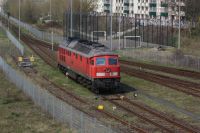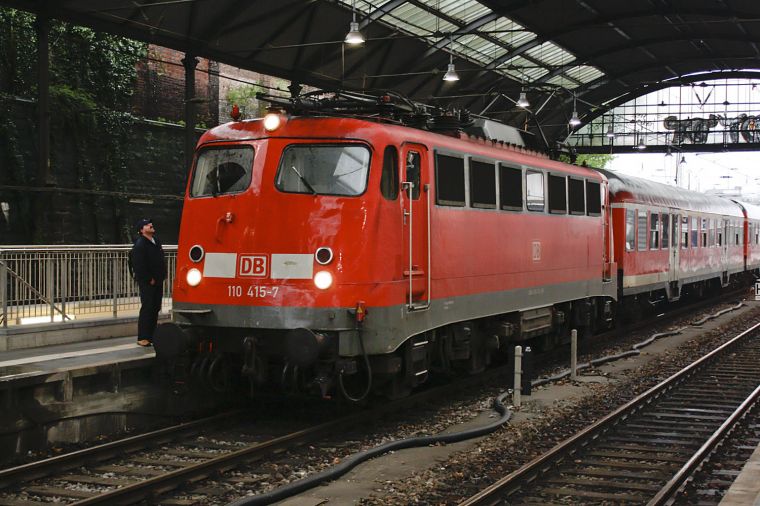Bügelfalte in Aachen
Posted: 18 April 2009
| Taken: | 2009-04-18 20:53:23 |
|---|---|
| Camera: | Canon EOS 1000D |
| Exposure: | -4/3 |
| ISO: | 500 |
| Aperture: | f/4.5 |
| Exposure Time: | 1/40 |
| Focal Length: | 34 mm |

This work is licensed under a Creative Commons Germany license.
Notes
I originally wanted to post something else from Berlin first, but someone urged me to post this first. So, enjoy 110 415 (I habitually ignore the -7, as it’s simply a checksum) standing in Aachen central station, having just hauled the RE4 train from I think Düsseldorf.
Actually I caught this train in Aachen West already, but there was no way to make a good picture of it there, so I just boarded it (thanks to my unlimited public transport ticket I got from my university) and decided to take pictures in the central station instead. A little after this, it drove on, probably to Aachen Rothe Erde, a thoroughly boring station which has a large yard that is often used to store trains overnight.
This is the so-called “Bügelfalte” version of the locomotive, which translates roughly as crease front (or so I heard, if you have a better translation let me know). In contrast to this, there is also the box version. Now, many including my past self get wrong which one is more exotic, so let me explain: The original E 10 (which is called class 110 these days), just like the other “Einheitsloks” (standard locomotives), classes E 40, E 41 and E 50, came in the box shape. Then, a high-speed version of the E 10 (called E 10.12) was needed for TEE services, for which the crease front version was developed. After some time, it was decided to build all future E 10s with the crease body (which were then called sub-class E 10.3) even without the high-speed equipment. The result is that if you see a class 110 (or class 115, exactly the same thing but owned by a different subdivision), it is much more usual to see it with the crease front body. However, these days you are much more likely to see a 140 (or 139, largely the same thing) than any 110 at all, and they always had the boxy body. So just looking at 110s, the box version is less usual, but looking at the standard locomotives in general, the box version is more frequent.

 Deutsche Version
Deutsche Version Entire Gallery
Entire Gallery

 Next Picture
Next Picture
 Previous Picture
Previous Picture
